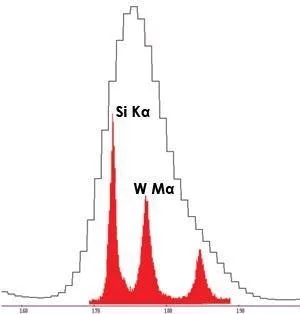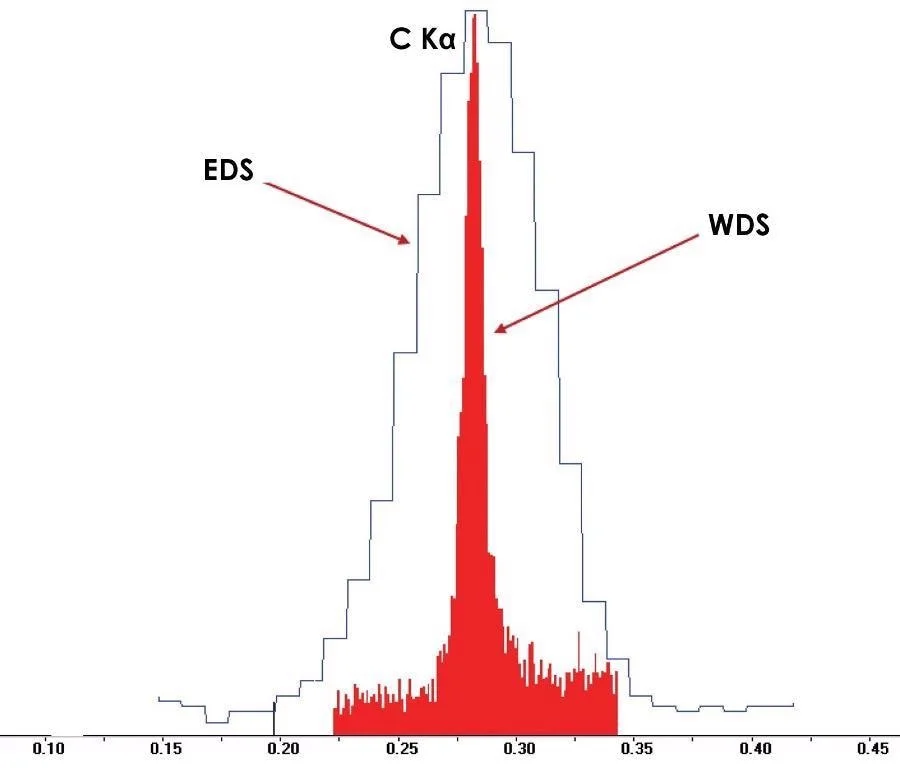The EDAX Lambda™ wavelength dispersive spectroscopy (WDS) analysis system seamlessly combines WDS software with cutting-edge spectrometers, delivering heightened precision and accuracy to optimize materials analysis outcomes for users.
The Lambda spectrometers are purpose-built for parallel beam operation and are available in various models:
- Lambda Plus: This model is designed to provide maximum efficiency for transition element energies within the range of 150 eV to 10 keV (from B Kα to Ge Kα) by utilizing polycapillary optics.
- Lambda Super: The dual optics system in this model offers optimal performance for analyzing light elements, specifically B, C, N, and O, thanks to its high-collection, reflective, and patent-pending X-ray optics. When combined with polycapillary optics, it can extend its high-intensity capabilities up to 16 keV, covering a comprehensive operational range from 100 eV to 16 keV.
The Lambda spectrometers' compact design allows for easy installation on any standard energy dispersive X-ray spectroscopy (EDS/EDX) port. These spectrometers serve as an ideal complementary tool for enhancing EDS analysis.

Overlap of silicon K and tungsten M lines are easily resolved using WDS instead of EDS. Image Credit: Gatan
Scanning modes
The Lambda spectrometers are equipped to scan the entire energy range, ensuring coverage of at least one X-Ray line for every element on the periodic table. The scanning mode options encompass:
- Automatic acquisition of one or several EDS elements
- The flexibility to customize the scan range according to the user's specific application, either through manual input or using the Spectral Swipe Mode
- User-selectable speed and step size
- Availability of peak and background modes for a variety of elements
- Users can define elements via an intuitive periodic table interface
- Software indicates peak, diffractor, and background positions
Qualitative and quantitative analysis
The EDAX WDS software, which is part of Smart Quant, provides users with the capability to perform both quantitative and qualitative measurements. Users have the option to simultaneously gather and compare WDS and EDS data for straightforward qualitative confirmation. Moreover, analysts can select either the EDS or WDS method for quantifying a specific element of interest, thereby improving accuracy and detection limits.
Features and benefits
Compact design
- Compatible with all SEM chambers equipped with a high-angle port
- It can be easily installed on a standard EDS port without the need for a special chamber or port
Sensitivity
- Combines X-ray optics and compact design to offer outstanding count rates
High count rates and peak-to-background ratios
- Rapid X-ray analysis while maintaining the highest resolution
- Capable of resolving a significant portion of elemental overlaps
- Exceptional resolution for the K lines of transition elements
Ease of alignment
- The operation, performance, and accuracy of data are enhanced by automated routines

C in SiC showing superior resolution of WDS compared to EDS. Image Credit: Gatan
Smooth integration with EDS and user-friendly software
- Intuitive operation for WDS and EDS users
- Optimized X-ray microanalysis
- Covers the complete periodic table
Smart Focus
The EDAX WDS software includes the Smart Focus routine, which is an automated procedure that fine-tunes the sample height to optimize the focus of the WDS signal, thereby enhancing the spectrometer's overall performance.
